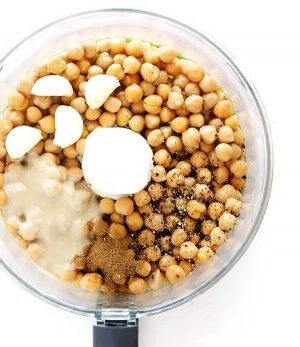#hummushealthy
Text
How to make humus ? and What is humus ?

Hummus is a popular Middle Eastern appetizer. It is made by mixing chickpeas or beans, tahini (sesame seeds), olive oil, lemon juice and garlic in a food processor. Humus is not only a delicious variety of appetizers, it is a food that has all-round health and nutritional benefits with its rich nutrients. The 8 scientifically proven benefits of humus are as follows:

1. Very Nutritious and Plant Based Protein Source
Humus is nutritious because it contains a wide range of vitamins and minerals. The nutritional value of a 100 gram (3.5 ounce) humus portion is as follows:
• Calories: 166
• Fat: 9.6 grams
• Protein: 7.9 grams
• Carbohydrate: 14.3 grams
• Fiber: 6.0 grams
• Manganese: 39%
• Copper: 26%
• Folate: 21%
• Magnesium: 18%
• Phosphorus: 18%
• Iron: 14%
• Zinc: 12%
• Thiamine: 12%
• B6 Vitamin: 10%
• Potassium: 7%
Humus is an excellent source of plant-based protein that provides 7.9 grams per serving. This makes the humus a great option for those on a vegetarian or vegan diet. Consume enough protein is essential for optimal growth, healing and immune function. In addition, humus contains iron, folate, phosphorus and B vitamins, which are important for vegetarians and vegans, who cannot get enough from their diet.
2. Contains Ingredients Proven to Help Fight Inflammation

Inflammation is a way of protecting the body from infection, disease or injury. However, sometimes inflammation may remain in the body for longer than necessary. This is called chronic inflammation and has been associated with many serious health problems. Humus is full of healthy ingredients that can help fight chronic inflammation, and olive oil is one of them. It is rich in powerful antioxidants with anti-inflammatory benefits. In particular, extra virgin olive oil contains the antioxidant oleocantal, which is widely believed to have anti-inflammatory properties similar to anti-inflammatory drugs. Similarly, sesame seeds that produce tahini can help to reduce signs of inflammation in the body, such as IL-6 and CRP, which are elevated in inflammatory diseases such as arthritis. Moreover, many studies have shown that consuming a diet rich in legumes such as chickpeas,
3. Promotes Digestive Health and Nourishes Good Gout Bacteria
Humus is an excellent source of dietary fiber that can improve digestive health. It provides 6 grams of dietary fiber per 3.5 ounces (100 grams). This is equal to 24% of daily fiber advice for women and 16% for men. Humus can help keep the digestion regular thanks to its high fiber content. This is because dietary fiber helps soften the stool so that it can pass through the intestines more easily.
Dietary fiber also helps to feed healthy bacteria living in the intestines. One study found that the addition of 200 gr of chickpea (or raffinose fiber from chickpea) for three weeks helped reproduction of beneficial bacteria, such as bifido bacteria, and helped suppress the growth of harmful bacteria. Some of the fibers in the humus can be converted to short-chain fatty acid butyrate by intestinal bacteria. This fatty acid helps to feed colon cells and has many impressive benefits. Laboratory studies have shown that butyrate production is associated with lower risk of colon cancer and other health problems.
4. Controls Low Blood Sugar
Humus has several properties that can help control blood sugar levels. Humus is mostly made from chickpeas with low glycemic index (GI). Glycemic index is a measure of the ability of food to increase blood sugar. Foods with a high GI value are quickly digested and then absorbed, resulting in a sharp rise and a decrease in blood sugar levels. Conversely, foods with a low GI value are slowly digested and then absorbed, causing a slower and more balanced rise and a decrease in blood sugar levels.
Also humus is a source of healthy fat and a great soluble fiber. Chickpea is rich in protein, slow starch and antinutrient which slow down carbohydrate digestion. In addition, fats help to slow the absorption of carbohydrates from the intestine, which leads to a slower and more stable release of sugar into the bloodstream. For example, research has shown that although white bread provides the same amount of carbohydrate, it releases four times more sugar into the blood after a meal than humus.
5. Contains Components That Can Reduce Heart Disease Risk
Heart disease is responsible for 1 out of every 4 deaths worldwide. Humus contains several components that can help reduce risk factors for heart disease. In a five-week study, chickpeas or wheat were added to 47 healthy adult diets. After the study, those who eat extra chickpeas have a bad LDL cholesterol level of 4.6% lower than those who eat extra wheat. In addition, a review of 10 studies with more than 268 people concluded that a diet rich in legumes such as chickpeas reduced bad LDL cholesterol by an average of 5%.
In addition to chickpeas, humus is also a food that is obtained from olive oil and which is suitable for heart health. The analysis of 32 studies with more than 840,000 people found that those with the highest healthy fat intake, such as olive oil, had a 12% lower and 11% lower overall risk of death from heart disease. Another study found that the risk of heart disease was reduced by 10% for every 10 grams (about 2 teaspoons) of extra virgin olive oil consumed daily. Although these results are promising, further studies on humus are needed.
6. Helps to Lose Weight

Several studies have examined how humus affects weight loss and maintenance. Interestingly, according to a national study, those who regularly consume chickpeas or humus are 53% less likely to be obese. In addition, their BMI is lower and their waist size is 2.2 inches (5.5 cm) smaller on average than people who do not consume chickpeas or humus. However, it is not entirely clear whether these results are due to certain characteristics of chickpea or humus, or that only those who eat these foods generally live a healthy lifestyle.
Other studies have shown that intake of legumes, such as chickpeas, leads to lower body weight and increased satiety. Humus has several features that can help increase weight loss. Fullness hormones cholecystokinin (CCK) is an excellent source of dietary fiber that has been shown to increase peptide YY and GLP-1 levels. Moreover, dietary fiber has also been shown to reduce levels of the fasting hormone ghrelin. By reducing one's appetite, fiber can help reduce calorie intake, which promotes weight loss. In addition, humus is a plant-based protein source. Research has shown that a higher protein intake can help prevent appetite and accelerate metabolism.
7. Is gluten-free
Food allergies and intolerances affect millions of people worldwide. People suffering from this do not cause food allergies and intolerance disturbing symptoms. Fortunately, the hummus was edible by almost everyone. Naturally it does not contain gluten, nuts and milk, which is suitable for people affected by general conditions such as celiac disease, hazelnut allergies and lactose intolerance. Although humus is naturally free of these ingredients, it is safe to consume the entire list of ingredients as some brands may add preservatives or other ingredients. In addition, it should be noted that chickpeas are high in raffinose, a form of FODMAP. People who are susceptible to FODMAPs, such as those with bowel syndrome, should be careful not to consume excessive humus.
We’ve guided over 416,387 people to success…
If you want to lose weight seriously,
In this Guide Will Change Your Life…, you’ll get 10 breakfast recipes, 14 lunch recipes, and 14 dinner recipes, plus a companion 28-Day Meal Plan.
8. Can be added to the diet
Hummus is not only nutritious and delicious, it is also an easy food to add to the diet. Instead of high-calorie mayonnaise or sauces, pita bread can be poured on toast. Humus can also be consumed with crispy foods such as celery, carrots, cucumbers and sweet peppers. Many people think that humus has a flavor that replaces potato chips. Although humus is commonly found in supermarkets, making it at home is extremely easy and healthier. The entire process takes less than 10 minutes.

How to Make Humus?
• 2 cups of canned chickpeas (
1/3 cup of tahini)
• 1/4 cup of lemon juice
• 1 tablespoon of olive oil
• 2 cloves of garlic, crushed
• A pinch of salt
Put the ingredients in a food processor and mix until soft.
Bibliography:
conserve-energy-future.com
greenandvibrant.com
draxe.com
Read the full article
#howtomakehomemadehummus#Howtomakehumus#humerusbone#hummuscalories#hummusgoodforyou#hummushealthy#hummusnutritionfacts#hummusrecipe#humus#humusketo#Whatishumus
0 notes